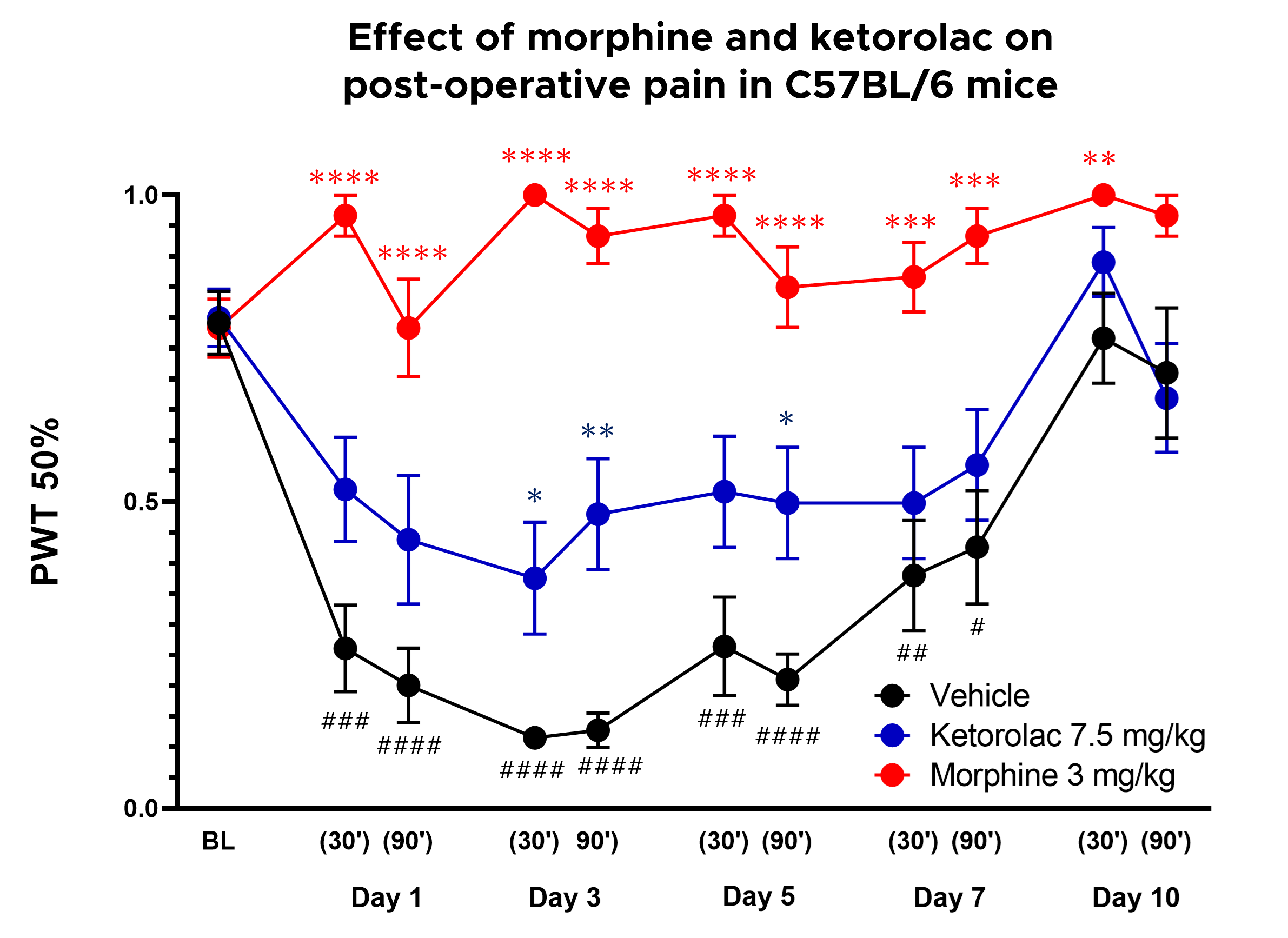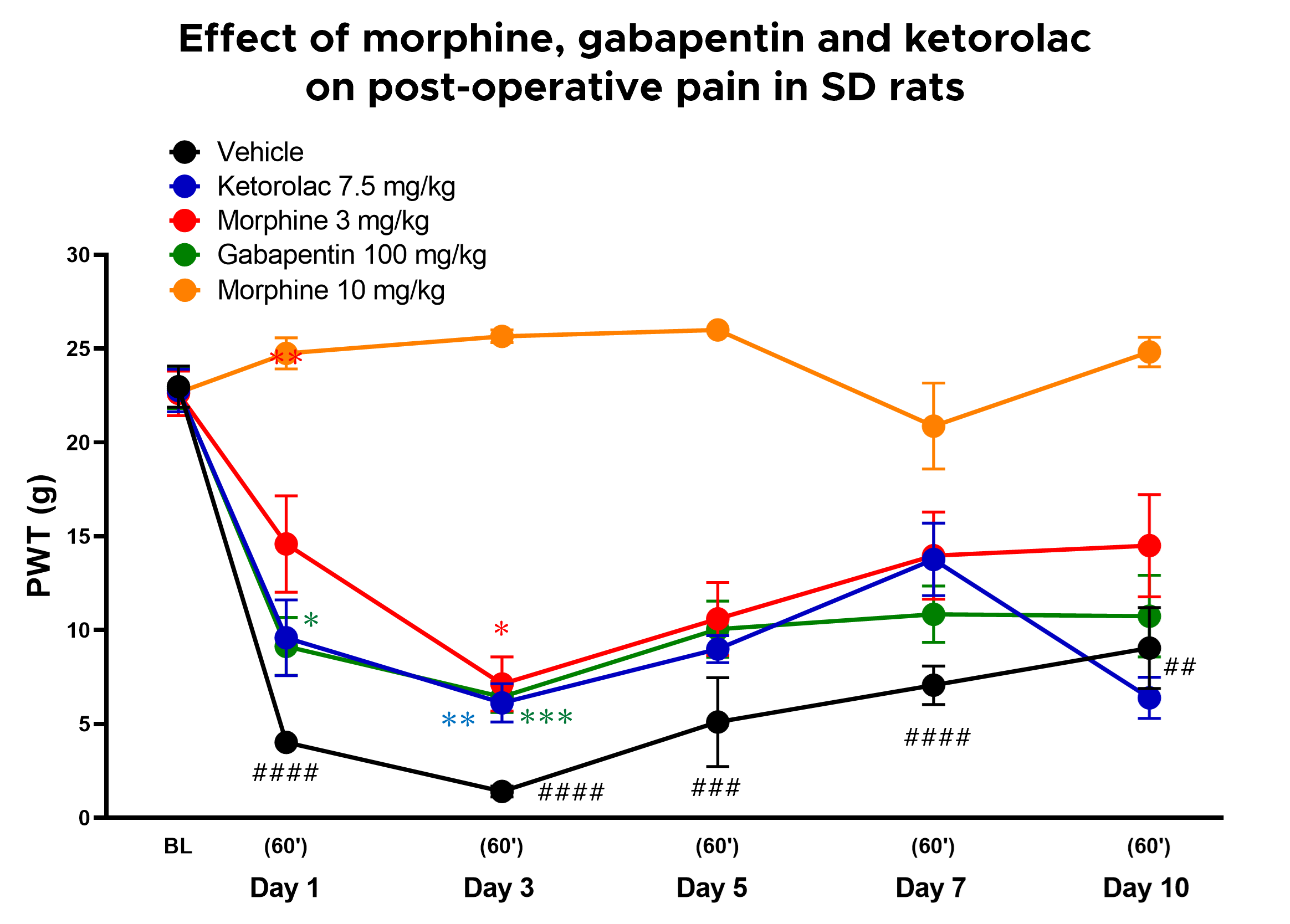Models & Assays
Post-Operative Pain
Post-operative pain is a common complication of surgery that can prolong recovery and increase risk of infection. This type of pain is inadequately managed and can transition into persistent pain with neuropathic features in approximately 10% of patients.
Post-operative pain can be modelled in rodents via an incision of the plantar skin (Brennan model). This leads to transient mechanical hypersensitivity which can be treated with analgesics such as morphine, ketorolac or gabapentin.

Figure 1: A longitudinal incision (4-5 mm) of the skin and fascia causes mechanical pain evident by a reduction in paw withdrawal thresholds (PWT, g) measured with von Frey filaments. This hypersensitivity develops within 24hr post-surgery and persists for at least 5 days, slowly recovering thereafter. The NSAID ketorolac (7.5mg/kg, s.c.) gave partial analgesia while morphine (3mg/kg, s.c.) completely reversed pain at 30 and 90 min.
Mean ± SEM, n=10/group, 2W RM ANOVA with Dunnett’s vs Vehicle at same timepoint (*), or baseline (#); */#p<0.05, **/##p<0.01, ***/###p<0.001, and ****/####p<0.0001.

Figure 2: A longitudinal incision (1 cm) of the skin and fascia triggers mechanical pain evident by a reduction in paw withdrawal thresholds (PWT, g) measured with von Frey filaments. This sensitivity develops within 24hr post-surgery and persists for at least 5 days, slowly recovering thereafter. The NSAID ketorolac (7.5 mg/kg, s.c.), gabapentin (100mg/kg, p.o.) and a low dose of morphine (3mg/kg, s.c.) gave partial analgesia, while a high morphine dose (10mg/kg, s.c.) gave full analgesia at 60 min.
Mean ± SEM, n=10/group, 2W RM ANOVA with Dunnett’s vs Vehicle at same timepoint (*), or baseline (#); */#p<0.05, **/##p<0.01, ***/###p<0.001, and ****/####p<0.0001.